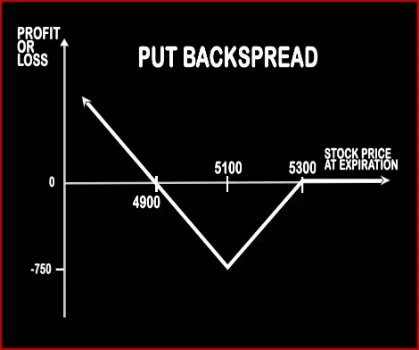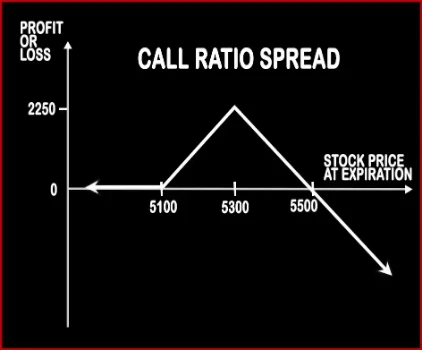Compare Strategies
| PUT BACKSPREAD | RATIO CALL SPREAD | |
|---|---|---|

|

|
|
| About Strategy |
Put Backspread Option StrategyIf the trader is bearish on market and bullish in volatility, he will implement this strategy. However the trader can be neutral in nature i.e. indifferent if the market moves in either of the direction, this strategy will make profits, but uptrend will give a capped income than downtrend which will give unlimited returns. |
Ratio Call Spread Option StrategyAs the name suggests, a ratio of 2:1 is followed i.e. buy 1 ITM Call and simultaneously sell OTM Calls double the number of ITM Calls (In this case 2). This strategy is used by trader who is neutral on the market and bearish on the volatility in the near future. Here profits will be capped up to the premium amount and risk will be potentially unlimited since he is .. |
PUT BACKSPREAD Vs RATIO CALL SPREAD - Details
| PUT BACKSPREAD | RATIO CALL SPREAD | |
|---|---|---|
| Market View | Bearish | Neutral |
| Type (CE/PE) | PE (Put Option) | CE (Call Option) |
| Number Of Positions | 2 | 3 |
| Strategy Level | Advance | Beginners |
| Reward Profile | Limited | |
| Risk Profile | Unlimited | |
| Breakeven Point | Upper Breakeven Point = Strike Price of Short Calls + (Points of Maximum Profit / Number of Uncovered Calls), Lower Breakeven Point = Strike Price of Long Call +/- Net Premium Paid or Received |
PUT BACKSPREAD Vs RATIO CALL SPREAD - When & How to use ?
| PUT BACKSPREAD | RATIO CALL SPREAD | |
|---|---|---|
| Market View | Bearish | Neutral |
| When to use? | This strategy is used by trader who is neutral on the market and bearish on the volatility in the near future. Here profits will be capped up to the premium amount and risk will be potentially unlimited since he is selling two calls. | |
| Action | Buy 1 ITM Call, Sell 2 OTM Calls | |
| Breakeven Point | Upper Breakeven Point = Strike Price of Short Calls + (Points of Maximum Profit / Number of Uncovered Calls), Lower Breakeven Point = Strike Price of Long Call +/- Net Premium Paid or Received |
PUT BACKSPREAD Vs RATIO CALL SPREAD - Risk & Reward
| PUT BACKSPREAD | RATIO CALL SPREAD | |
|---|---|---|
| Maximum Profit Scenario | Strike Price of Short Call - Strike Price of Long Call + Net Premium Received - Commissions Paid | |
| Maximum Loss Scenario | Price of Underlying - Strike Price of Short Calls - Max Profit + Commissions Paid | |
| Risk | Limited | Unlimited |
| Reward | Unlimited | Limited |
PUT BACKSPREAD Vs RATIO CALL SPREAD - Strategy Pros & Cons
| PUT BACKSPREAD | RATIO CALL SPREAD | |
|---|---|---|
| Similar Strategies | Variable Ratio Write | |
| Disadvantage | • Unlimited potential loss. • Complex strategy with limited profit. | |
| Advantages | • Downside risk is almost zero. • Investors can book profit from share prices moving within given limits. • Trader can maximise profit when the share closes at the upper breakeven point. |